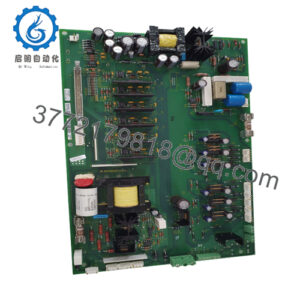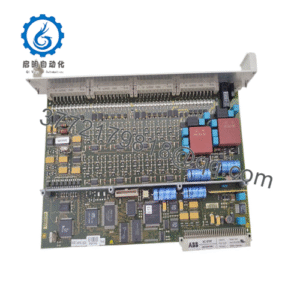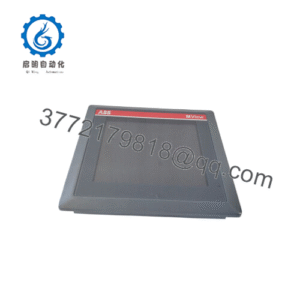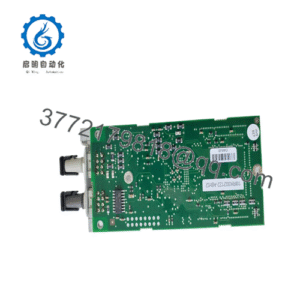Description
| Model | SPSED01 |
| Brand | ABB |
| Type | Emergency Shutdown Interface Module |
| Safety Integrity Level | SIL 3 certified (per IEC 61508) |
| Number of ESD Channels | 4 independent channels |
| Input Signal Type | 24V DC safety contacts, dual redundant inputs |
| Output Signal Type | 24V DC safety outputs (3A max per channel) |
| Processing Architecture | Dual-core redundant processors |
| Isolation | 5kV galvanic isolation (channels and safety buses) |
| Response Time | <5ms for emergency shutdown signals |
| Diagnostic Coverage | >99% |
| Operating Temperature | -40°C to +70°C (-40°F to +158°F) |
| Mounting | Rack-mounted in ABB safety enclosures |
| Dimensions | 160mm width x 130mm height x 220mm depth |
| Weight | 1.05kg |
| Certifications | IEC 61508, ATEX, UL 1998, CSA C22.2, TÜV certified |
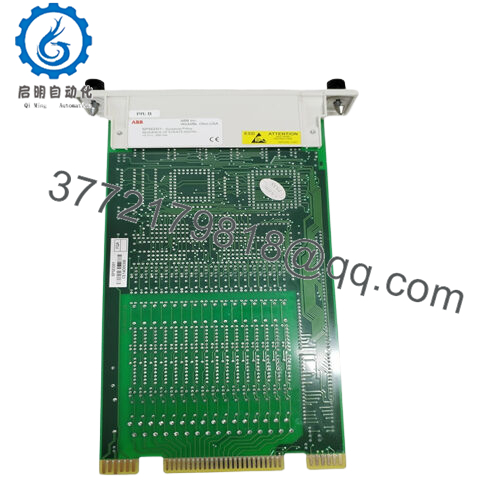
SPSED01
The ABB SPSED01 is a dedicated emergency shutdown interface module designed specifically for integrating emergency stop circuits and safety interlocks into safety instrumented systems (SIS). As a key component of ABB’s safety automation portfolio, it provides specialized processing for emergency shutdown signals, combining signal validation with redundant output capabilities in a single unit.
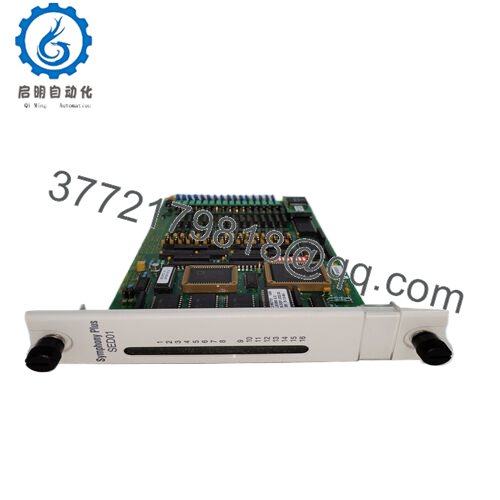
SPSED01
In safety system architecture, the ABB SPSED01 functions as a critical safety layer between field devices and final control elements in ESD loops, ensuring that shutdown commands are executed even if primary control paths fail. What distinguishes the ABB SPSED01 is its dual-core processing architecture and built-in voting logic, making it suitable for safety applications where failure to act could result in significant harm to personnel or equipment.
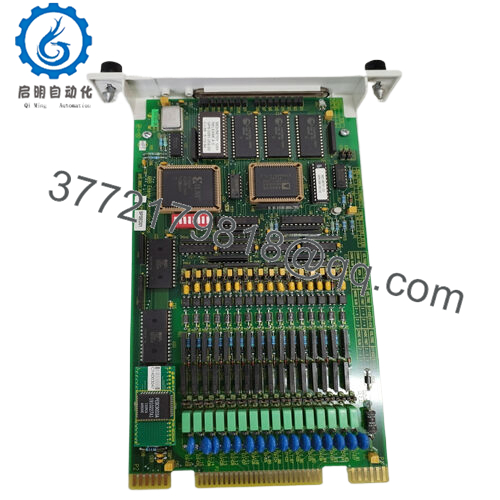
SPSED01
Main features and advantages:
The ABB SPSED01 delivers specialized safety performance with 4 independent emergency shutdown channels, each capable of processing dual redundant input signals from safety sensors and providing validated outputs to shutdown actuators. Its hardware design incorporates fully redundant processing paths with diverse components to prevent common-mode failures, a requirement for maintaining SIL 3 capability. Each channel features enhanced filtering to distinguish between genuine emergency signals and transient electrical noise, reducing the risk of spurious shutdowns that can cost production facilities significant downtime.
A key advantage of the ABB SPSED01 is its advanced signal validation algorithms that check for sensor integrity and signal consistency before initiating shutdown actions. The module maintains a diagnostic coverage rate exceeding 99%, continuously monitoring internal components and external connections for faults. Unlike general-purpose safety modules, the ABB SPSED01 includes specific functionality for emergency shutdown applications, such as configurable time delays, partial stroke testing capabilities, and manual reset interlocks. Its rugged construction ensures reliable operation in harsh environments, with enhanced immunity to electromagnetic interference and voltage transients common in industrial facilities during fault conditions.
Application areas:
In high-risk industrial facilities such as offshore oil platforms, chemical processing plants, and LNG terminals, the ability to rapidly initiate emergency shutdowns (ESD) can mean the difference between a contained incident and a catastrophic event. These environments require specialized modules that can reliably detect hazardous conditions, validate emergency signals, and trigger safety actions while maintaining strict separation from non-safety systems. This is where the ABB SPSED01 excels, serving as a critical component in ABB’s safety instrumented systems. Used in industrial automation applications requiring SIL 2/3 compliance, this module addresses critical challenges like signal validation, redundant actuation, and diagnostic coverage for emergency shutdown circuits. Engineers rely on the ABB SPSED01 to connect safety sensors, emergency stop devices, and shutdown valves, ensuring that safety actions are executed precisely when needed while minimizing false trips that could disrupt operations.
Related products:
SPHSS03 – Safety interface module that connects the ABB SPSED01 to the main DCS for status monitoring.
SPHDI16 – Safety digital input module providing additional sensor inputs to the ABB SPSED01.
SPHDO08 – Safety output module that extends the ABB SPSED01‘s actuation capabilities for larger systems.
SPDMS01 – Safety management module that logs shutdown events and diagnostics from the ABB SPSED01.
SPDPW24S-R – Redundant safety power supply providing dual-feed power to the ABB SPSED01.
SPDCS02 – Safety communication module enabling remote monitoring of the ABB SPSED01 status.
SPDAL16 – Alarm annunciator that displays shutdown status from the ABB SPSED01.
SPTEST01 – Test module supporting partial stroke testing of valves controlled by the ABB SPSED01.
Installation and maintenance:
Before installing the ABB SPSED01, verify that the mounting rack provides the required physical separation from non-safety equipment as specified in IEC 61508. Ensure all wiring follows safety segregation guidelines, with separate cable trays for safety and non-safety circuits. The ABB SPSED01 must be connected to a redundant power supply with dedicated overcurrent protection, and all field connections should use shielded twisted-pair cables with shields grounded at both ends. Document all wiring and configuration settings according to safety standards, as this documentation will be required for SIS certification audits.
For maintenance of the ABB SPSED01, perform weekly diagnostic checks using the safety system software to verify channel integrity and redundant processing functionality. Conduct monthly visual inspections focusing on terminal block tightness and connector condition, as loose connections can compromise safety functionality. When performing testing, use the module’s built-in test mode to prevent unintended shutdowns during maintenance. Calibration verification of associated sensors should be performed quarterly, but the ABB SPSED01 itself requires no periodic calibration. All firmware updates must follow ABB’s safety-approved update procedure to maintain SIL certification, with verification tests performed after any software changes.
Other ABB products:
ABB 745745
ABB 746376
ABB 07AC91
ABB 07KR31 FPR36000227R1202-O
ABB 07KT92
ABB 07KT92 GJR5250500R0202
ABB 07KT93
ABB 07KT93
ABB 07KT93 GJR5251300R0101
ABB 07KT94 GJR5252100R3261
ABB 07kt94g GJR5252100R0261
ABB 07KT94-S H3 GJR5252100R2201
ABB 07KT98 GJR5253100r0272
ABB 07KT98 GJR5253100R0272
ABB 07KT98 GJR5253100R0272
ABB 07MK92 GJR5253300R1161
ABB 086318-002
ABB 086329-004
ABB 086329-004
ABB 086329-004 includes SMI board (806339-001)
ABB 086339-501
ABB 086345-504
ABB 086348-001
ABB 086348-001
ABB 086348-001
ABB 086351-003
ABB 086351-004-C
ABB 086362-001
ABB 086362-001
ABB 086370-001
ABB 086370-001
ABB 086444-005
ABB 086444-005
ABB 086444-005
ABB 128057-204 086345-504 Frame
ABB 129740-002
ABB 129740-002
ABB 129740-002
ABB 1336-BDB-SP79D
ABB 16NG63A HESG441635R1 HESG216879/K
ABB 1756-L72
ABB 1KHL178016R0001F PSM03
ABB 1KHL178016R0001F PSM03
ABB 1KHL178016R0001F PSM03
ABB 1KHL178025R0102P COM02
ABB 1KHL178025R0102P COM02
ABB 1KHL178025R0102P COM02
ABB 1MRB150005R1/P
ABB 1MRK000005-380 REG670
ABB 1MRK000508-BD
ABB 1MRK000508-CDr09
ABB 1MRK002122-ABR02
ABB 1MRK002238-CA
ABB 1MRK002311-AAR02
ABB 1MRK002311-AAR02
ABB 1MRK002816-AC
ABB 1MRK004810 RED670
ABB 1MRK004816-AB RET670
ABB 1SAJ520000R0101 1SAJ520000R0101 UMC100-FBP.0 A4
ABB 1SCA022079R9050
ABB 1SCA022079R9050 OETL-ZT80A220AC
ABB 1SDA-051116-R1
ABB 1SDA060537R1
ABB 1SDA071666R1
ABB 1SFA619550R1071
ABB 1SVR730830R0400
ABB 1SVR730840R0300
ABB 1TGB302004R5003

 WhatsApp: +86 16626708626
WhatsApp: +86 16626708626 Email:
Email:  Phone: +86 16626708626
Phone: +86 16626708626